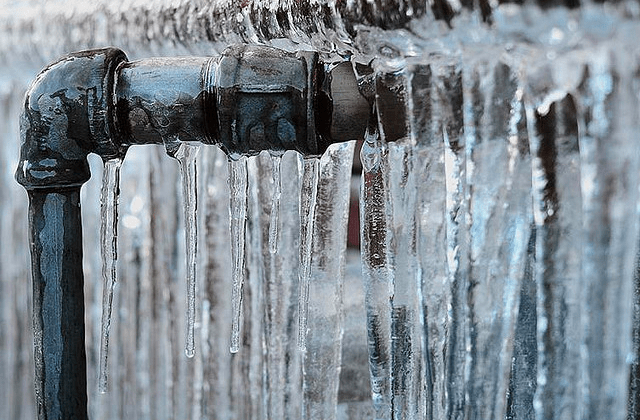Avoiding Frozen Pipes in Cold Weather: Pro Tips
Avoiding Frozen Pipes in Cold Weather: Pro Tips
Blog Article
Listed here on the next paragraphs you will find a lot of incredibly good insight around Winter Plumbing Precautions: Preventing Frozen Pipes.

Winter can damage your pipes, particularly by freezing pipes. Here's just how to prevent it from happening and what to do if it does.
Intro
As temperature levels decline, the threat of icy pipes increases, possibly leading to pricey repair services and water damage. Understanding just how to prevent frozen pipelines is essential for property owners in chilly environments.
Recognizing Frozen Pipes
What causes pipelines to freeze?
Pipes freeze when subjected to temperatures listed below 32 ° F (0 ° C) for prolonged periods. As water inside the pipes freezes, it expands, taxing the pipe walls and possibly triggering them to burst.
Threats and problems
Icy pipes can bring about supply of water interruptions, residential property damage, and costly repairs. Burst pipelines can flooding homes and cause extensive architectural damages.
Signs of Frozen Water Lines
Identifying frozen pipes early can prevent them from bursting.
Just how to determine frozen pipes
Seek lowered water flow from taps, unusual smells or noises from pipes, and noticeable frost on revealed pipelines.
Prevention Tips
Insulating vulnerable pipes
Wrap pipes in insulation sleeves or utilize warm tape to shield them from freezing temperature levels. Focus on pipelines in unheated or external areas of the home.
Heating techniques
Maintain interior areas properly heated, specifically areas with pipes. Open up cupboard doors to enable warm air to circulate around pipelines under sinks.
Protecting Exterior Pipes
Garden tubes and outside faucets
Detach and drain pipes garden hose pipes prior to winter months. Mount frost-proof spigots or cover outdoor taps with insulated caps.
What to Do If Your Pipelines Freeze
Immediate activities to take
If you believe icy pipes, keep taps open up to ease pressure as the ice thaws. Use a hairdryer or towels taken in hot water to thaw pipes gradually.
Long-Term Solutions
Architectural modifications
Take into consideration rerouting pipes away from outside wall surfaces or unheated locations. Include extra insulation to attic rooms, cellars, and crawl spaces.
Updating insulation
Invest in high-grade insulation for pipes, attic rooms, and walls. Correct insulation aids keep constant temperatures and minimizes the danger of frozen pipes.
Final thought
Avoiding frozen pipelines needs proactive measures and fast reactions. By understanding the causes, indications, and safety nets, home owners can safeguard their pipes during winter.
5 Ways to Prevent Frozen Pipes
Drain Outdoor Faucets and Disconnect Hoses
First, close the shut-off valve that controls the flow of water in the pipe to your outdoor faucet. Then, head outside to disconnect and drain your hose and open the outdoor faucet to allow the water to completely drain out of the line. Turn off the faucet when done. Finally, head back to the shut-off valve and drain the remaining water inside the pipe into a bucket or container. Additionally, if you have a home irrigation system, you should consider hiring an expert to clear the system of water each year.
Insulate Pipes
One of the best and most cost-effective methods for preventing frozen water pipes is to wrap your pipes with insulation. This is especially important for areas in your home that aren’t exposed to heat, such as an attic. We suggest using foam sleeves, which can typically be found at your local hardware store.
Keep Heat Running at 65
Your pipes are located inside your walls, and the temperature there is much colder than the rest of the house. To prevent your pipes from freezing, The Insurance Information Institute suggests that you keep your home heated to at least 65 degrees, even when traveling. You may want to invest in smart devices that can keep an eye on the temperature in your home while you’re away.
Leave Water Dripping
Moving water — even a small trickle — can prevent ice from forming inside your pipes. When freezing temps are imminent, start a drip of water from all faucets that serve exposed pipes. Leaving a few faucets running will also help relieve pressure inside the pipes and help prevent a rupture if the water inside freezes.
Open Cupboard Doors
Warm your kitchen and bathroom pipes by opening cupboards and vanities. You should also leave your interior doors ajar to help warm air circulate evenly throughout your home.

Hopefully you liked our part on Helpful Tips to Prevent Frozen Pipes this Winter. Thank you for taking a few minutes to read through our post. Please take the opportunity to share this blog entry if you enjoyed it. Thank you so much for your time invested reading it.
Visit Page Report this page